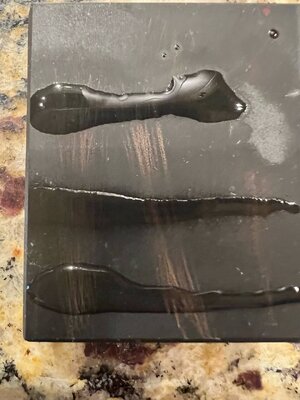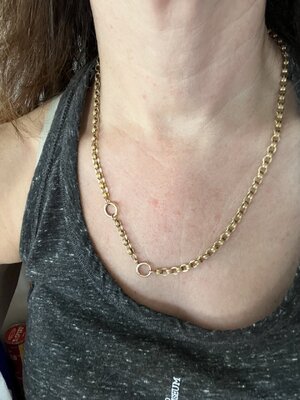Mreader
Ideal_Rock
- Joined
- Aug 14, 2018
- Messages
- 7,669
I bought a necklace off a site that says they test their metals with xray - they called it a Thermo Scientific Niton XL2 or DXL, an industry standard x-ray center. The item was supposed to be 14k. When I got it, I tested it myself using a home acid test. I am showing a picture below. The right scratch is the clasp, the left scratch is the links of the necklace (I am referring to the long big scratches; I see there is another to the right but ignore that. I have been testing many things haha). The bottom acid is 10k, middle 14, top 18. So it's at least 10k because the lines show up super clearly. But they fade at 14, but they don't disappear completely. This is where acid testing gets confusing for me. I can see the lines, but not as clearly as 10. So does that mean it's between 10 and 14? Like 12? I decided to take it to a pawn shop (I actually bought the acid kit so that I wouldn't have to keep doing that lol) and they said it tested as 10k. They said it is NOT 14k.
So my question is - would the xray be unreliable? Based on my test, are the pawn shop ppl correct in asserting it isn't 14k? Is it somewhere in between? I would love to hear your thoughts. Tagging @Karl_K and if anyone else knows anyone to tag about this, let me know!

So my question is - would the xray be unreliable? Based on my test, are the pawn shop ppl correct in asserting it isn't 14k? Is it somewhere in between? I would love to hear your thoughts. Tagging @Karl_K and if anyone else knows anyone to tag about this, let me know!

Last edited:








300x240.png)